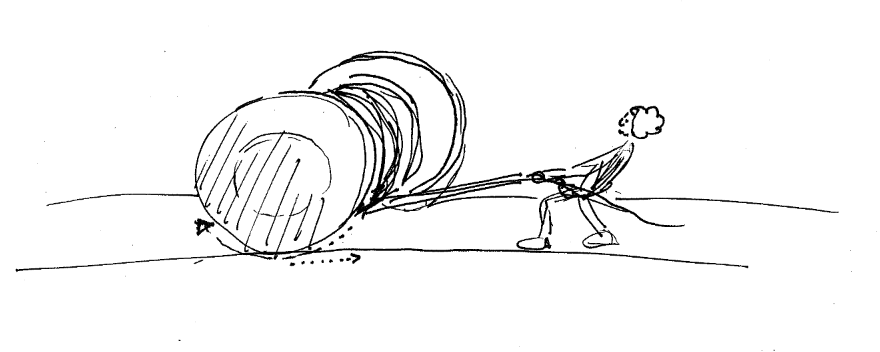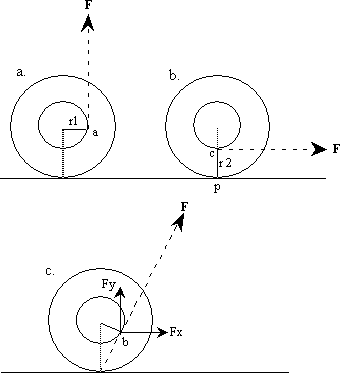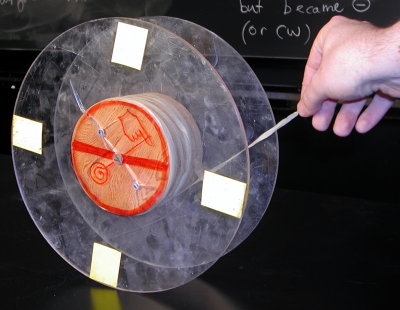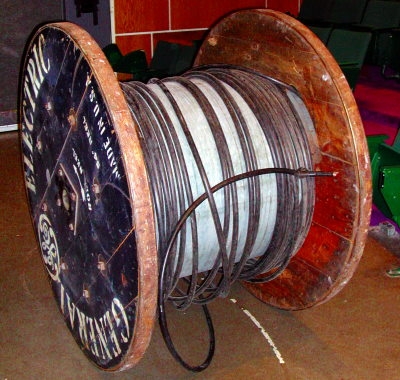A very large cable spool (or smaller version) is made to roll in either direction or slide, depending on the angle of pull; action of a torque.
What it shows:
Depending upon the angle of applied force, a yo-yo can be made to roll forwards, backwards or simply slide without rotating.

Sketch by Aeden Marcus
How it works:
The effect of force angle is illustrated in figure 1; (a) and (b) are the extreme cases. For (a), pulling the string vertically creates a torque r1F rotating the yo-yo counter-clockwise. Pulling the string horizontally as in (b) creates a torque r2F around p, the point of contact between the yo-yo and the floor. This torque is in the opposite direction so the yo-yo rolls clockwise. At any angle between there is a horizontal and vertical component to the force that contribute to the clockwise and counter-clockwise torques respectively. At the angle where the line of force joins the point of contact with the ground to the point of contact of the string with the spool, as in (c), the torques are balanced and the yo-yo slides without rotating.
figure 1. Applying a force to the yo-yo
A yo-yo big enough to be visible in a lecture hall is essential. We have made a 30cm diameter clear Plexiglas yo-yo, with a 12cm diameter central wooden spool that is 8cm wide. A 3m length of nylon cord is wrapped around it (although not that much is needed for the demo). For the more ambitious, we also have a General Electric 54" cable reel with 6m of 3/4" electric cable to pull.
Setting it up:
The Plexiglas yo-yo rolls on the lecture bench; the GE reel needs a lot of floor space.


Comments:
The Plexiglas yo-yo isn't built for yo-yoing (wrapping the GE cable around your finger isn't recommended either), so you may want to bring along a real yo-yo to introduce the demo.